This machine is a little newer then the machines I usually write about but its actually garnered somewhat of a reputation as being a very easy to work with and reliable PC for both work and gaming. I’m talking about the Pentium III based Compaq Deskpro EN. This machine came in a few forms such as tower, desktop and the small form factor as well as sported a few factory CPU and video option configurations. The one I’m going over here is the small form factor since in my opinion its the most interesting and also happens to be the one I own. As I mentioned this little machine has built somewhat of a reputation as a small space saving and reliable machine being easy to access as well as having few problems running over extended periods. In many ways I think this model barrows a lot of things from the Apple Macintosh designs of the late 90’s but in a PC they really work well. So lets take a look at the one I have here and see what can be done with it.
The unit as you can see it quite small. Its primarily situated to act as a desktop form factor machine but there’s really no reason it cannot be turned on its side and act as a mini tower. I find the aesthetic to be pretty nice. On the left where we have the Compaq marking we also have a little vent area for air to circulate/escape. A nice large power button with power and HDD LED’s, one on each side. Also on the front we have an easily accessible headphone and microphone jack which is really nice if your using the onboard sound. I’ll get into more about the sound in a minute. This machine was built late 90’s early 2000’s period so as the sticker states it was designed for the Windows 2000 and Win 98 OS’s but you can easily run Windows 95 if you wanted. DOS isn’t really recommended since in my opinion it is a bit to fast. Also the lack of any ISA card support really hurts for DOS sound compatibility. XP will also run pretty happily on this machine. Being a small case there isn’t much room for drives but for a basic reliable Win 98 or XP rig a CD/DVD drive and a 1.44 floppy drive as came in the original configuration should more then suffice. The CD drive I’m using was added later as the original CD drive had died.
Here I have 2 images of the rear of the machine. The one on top is the stock look and below that is after I added a separate video and sound card but I’ll go over the cards after I talk more about the machine. There’s quite a few useful ports built into this little machine. From left to right we have a serial port followed by a 1/8 audio out and an audio in port for the onboard sound. Next to that is a printer parallel port, a Ethernet port and then another serial port. Two USB 1.1 ports, a VGA port for the onboard video and finally two PS/2 ports for a keyboard and mouse. There’s a good variety of legacy ports and its nice there’s so much built into this machine. I like that they actually fit two serial ports in there even though realistically they probably will not see much use. It actually makes a nice light (weighs about 20lbs) sort of mobile LAN party PC if you just want a moderately powerful PC to take over to a friends and do some late 90’s early 2000’s FPS death matches or something. The big thing the machine lacks built in is a gameport for an older style gamepad though this is easily remedied by adding most any PCI sound card (which I recommend doing anyways) or just using a USB gamepad.
Now I’m going to touch on a few things that make this machine a little “Mac-like”. First off If you haven’t noticed this machine is very compact and most all the essentials are built in. Beyond that you may notice the lack of any screws on the front or back to gain access to the inside of the PC. This is because like a lot of 90’s Macs this machine is tool-less and uses plastic tabs on the sides. Your required to press in and then pull the cover forward and up to remove. Unlike 90’s macs these tabs actually feel very solid and well built. I don’t know if its just build quality or that this machine has a few less years on it but the plastic tab system doesn’t feel nearly as brittle or flimsy as most of the older Macs I’ve worked with and I don’t have the sensation that some tab or piece is going to snap off every time I open this machine. Possibly this is due to the fact the design still uses a good deal of metal which does add weight but creates MUCH better durability. I should also point out that in operation this PC is deathly quiet.
Here you can see the tab, one of which is on both sides of the case. The right side also sports a built in speaker, another “Mac-like” quality. If your using the onboard sound these are really nice to have as it eliminates the need for extra external PC speakers. Granted its a single speaker and the sound is not amazing it is adequate and both the PC speaker beeps and boops as well as the any audio output from the onboard sound is output this way unless your using one of the various audio out ports with an external speaker.
On opening the case getting to the motherboard itself is amazingly simple as most of the major components in the way either swing out on a hing or easily can be pulled out and detached once more borrowing from the 90’s Macintosh design.
Here we have the initial view from the top with the CD ROM drive and IDE hard drive visible.
And as you can see everything easily lifts out and moves out of the way to give full assess to the motherboard. And speaking of the motherboard.
Here is the exposed motherboard itself. The board is labeled Compaq and is dated 1999-2000 and has a cool bicycle logo printed on.
1) The CPU – These machines came with a variety of socket 370 Pentium III and Celeron processors. usually there is a code on the case that can help designate what CPU you have inside without actually turning the machine on. Mine is P833 designating an 833mhz Pentium III processor. I know the small form factor Deskpro EN’s came in 933mhz versions and possibly higher and as slow as 667mhz Celerons. In my own opinion I think this is a little to fast for running DOS stuff and without software to slow things down your going to have speed issues but its its acceptable for most Win 9x games and its actually really nice for later DOS FPS games run through Windows that can use that extra CPU power.
2) RAM – I think these came standard with 128MB of SDRAM but you can upgrade to a full 512MB of SDRAM as I have done via the three RAM slots. I suggest upgrading the RAM to the max 512mb as it is easy and cheap to do.
3) PCI expansion slot – This is where your PCI riser card goes. This riser card allows for three PCI expansion cards to be used in the small form factor machine.
4) onboard graphics (optional) – This spot with the unused solder points is where on some models the onboard graphics chip and RAM is. Some models came with the Nvidia TNT2 Pro graphics chips onboard along with 16mb of video memory. The TNT2 Pro was a great video chip for the time and really would make this machine a good gaming platform. Unfortunately not all models were manufactured with the chip and mine apparently was a bit more of a budget model and lacks the TNT2 chipset. Instead I have to rely on the video from the Intel 815E chipset which is adequate for normal use but somewhat lacking for serious late Windows gaming. Thankfully the video issues can be resolved by adding a PCI video card if desired. You can also add a Voodoo II card as I checked and the space in the case allows it though with the reduced airflow a voodoo III may be a better bet. I read in some spec sheets some models have built in Matrox G200 and G400/G450 chips but I’ve never actually seen any that have.
5) CMOS battery, mine needed replacing when I received this machine
6) standard floppy connector
7) IDE connectors – there are two ATA 100 IDE connectors here so I suppose you could connect four devices but the case only allows for two which is most commonly a hard drive and a CD/DVD ROM drive. In the case of just two drives I would suggest placing your hard drive on the primary IDE and CD/DVD drive on the secondary. You could possibly use a mico drive hard drive or a compact flash drive and adapter on one connector and just kinda let it dangle or tape it down since there so small and do not generate much heat. The hard drive that came with mine was a 14GB IDE drive and I think it may be original.
8) PSU connector – this machine being so small uses a proprietary 120 watts PSU so if it ever dies good luck finding a replacement. I don’t think one would have much luck shoving a standard PSU in there since its so cramped and the shape and form factor is so odd. The PSU also functions as a sort of internal case fan here.
9) just a connector for the one serial port that’s located all the way to the left on the rear of the case.
well that’s the basic configuration of my machine. I did find the video and audio on this machine lacking So I wanted to correct this via the PCI slots. I primarily wanted to make this a Win 9x gaming machine with as much DOS comparability as I could. The onboard sound works fine for windows but as far as I could tell it didn’t do to well with older games and on testing a game like Wolfenstein 3D I got the sound effects via the built in speaker but no music whatsoever. No manner of adjusting corrected this. Next I installed a Monster mx300 based on the Aureal Vortex2 sound chip but unfortunately Windows would not work with it giving me an error message telling me it needed to be placed in a primary PCI slot. I tried all the slots on the riser with the same error. I assume this had to do with an issues caused by being run through a riser card. After that I tried an old ESS PCI audio card. These things are cheap and common as dirt and supposedly give good windows and DOS support for a PCI card. Unfortunately the sound in games like Wolf3d worked but the FM synth sounded unbearably bad in my opinion. It also kept cutting out in Simcity 3000. There are some people that really like these cards but I never had much luck with them. Lastly I moved on and installed this card.
A Sound Blaster live! from the late 90’s. The problem with these cards are the drivers for them are terrible and most times look for a specific model Live! that they are meant for and the card has many versions (avoid the DELL OEM versions like the plague, part number SB0200/0203). Its usually best to buy a card with its driver CD but finding these cards with there original CD usually does not happen. After finding a drivers package that worked the card works great. Its a really nice clear sounding card for Windows gaming. It also adds a gameport which the original EN is lacking. DOS compatibility is also pretty good and Wolf3D actually sounds half decent now. I also played some Duke3d and the General Midi emulation sounds decent. My card is a CT4780 which is a 5.1 Value version but that really doesn’t make to much difference for just basic gaming and its light years ahead of the onboard audio.
After sound I moved on to the video. As I mentioned before my PC came without the optional TNT2 Pro chip which is a shame since that’s a pretty good graphical chipset for the time. Lucky for me I found a PCI Nvidia Geforce2MX 200 card at a flea market for $2.
Its a low end entry level card for the time sporting 32MB of video RAM but its still far better then even if my model did come with the two generations prior TNT2 chipset. The specs of the MX 200 are pretty similar to the TNT2 pro but benchmarks have the newer generation MX200 beating the TNT2 Pro in just about everything. So I guess in this way I’ve added a nice power boost while still keeping in the era or spirit of the original. I really don’t think this machine is meant for a high end super card. Especially with the limitation of PCI, the anemic PSU and the small form factor of the machine.
The small form factor EN is a nice little machine. It has most things you need built in and with some minor PCI card upgrades it makes a nice semi-mobile Win9x game rig for a retro LAN party or for home use. Its reliable, quiet and easy to work on but if your going for a power build look elsewhere.
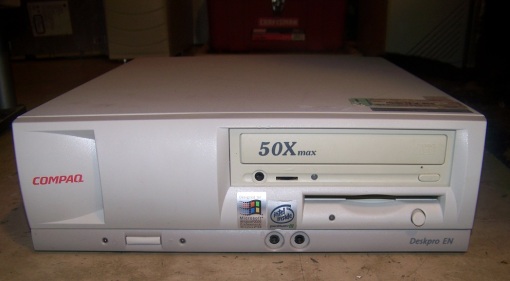
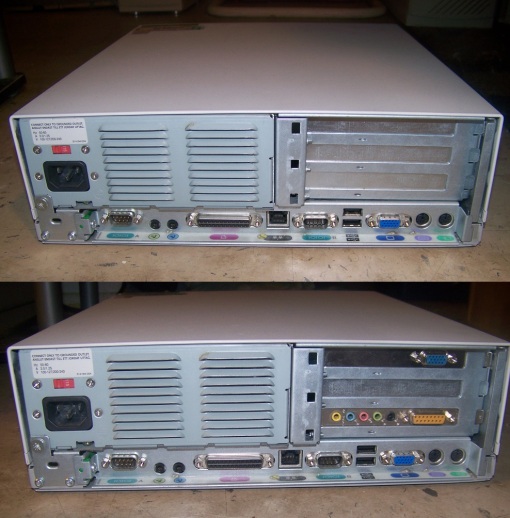

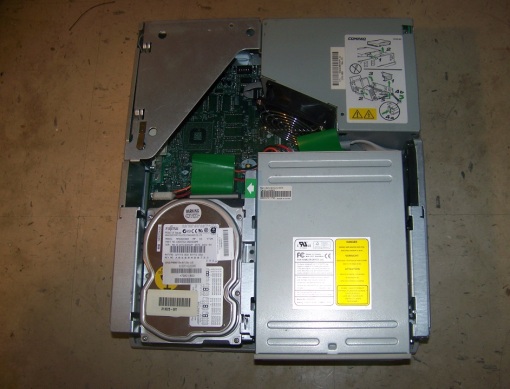
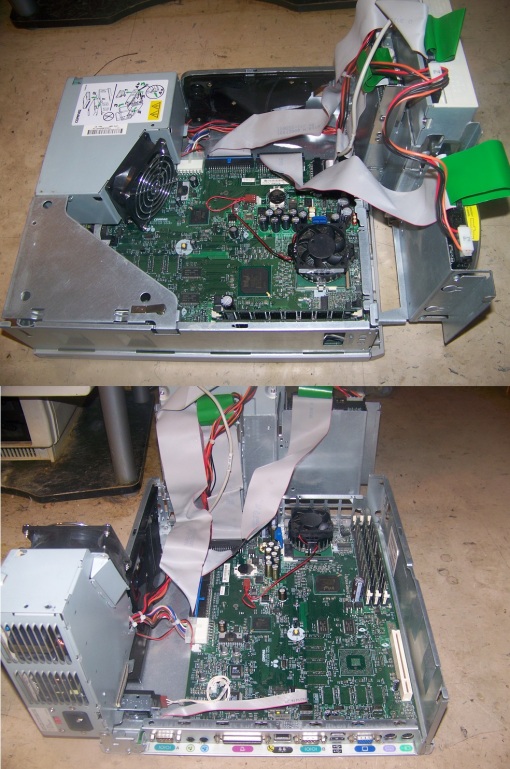

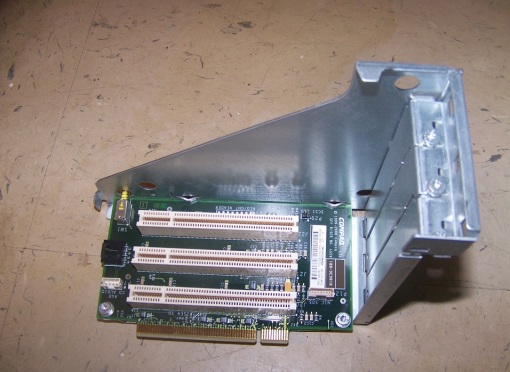
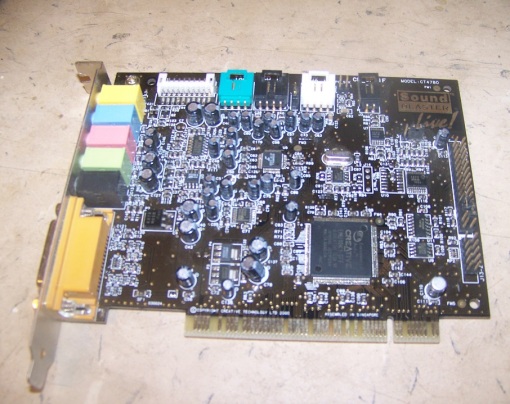

13 Comments
New Dell Machines I’ve looked inside recently are very similar in terms of design, not requiring any tools for pretty much anything except the CPU heatsink. Even high end systems! It seems to be a popular design idea with most large OEMs (HP, Dell, Acer etc) all doing something along those lines. This is great for basic servicing and cleaning!
Of course only machines with proprietary parts are built that way which introduces new problems, but I remember a generic case mATX case that also had a proprietary PSU, the Antec Minuet. It was nice and small and could fit a Floppy, CD-ROM and HDD much like this one in a smaller space. Unfortunately the earlier versions of the case had poor ventilation and the PSUs used in them seemed to die on a regular basis in the summer. Not being able to use a generic PSU made repairs of machines in those cases more expensive.
I had an AGP version of that GPU, although mine must have been faster as it required a heatsink (although a passive one). I used mine in a very similar system, a Celeron @800Mhz (100Mhz FSB coppermine I think) It played most games of the era quite well, I had it in a small tower chassis and it was great at LAN parties.
Cheers
Sparcie
I really like this machine. Like I said its no powerhouse but if your just a casual PC gamer but still wanted to use semi retro stuff its pretty nice and takes up very little space. I really liked the Geforce 2. I used to use a Geforce 2 ultra in my main 98 rig until I upgraded to a geforce 4. The MX is a stripped down GF2 but yhea, doesnt seem to need a heatsink at all.
I remember this machine; The design is really compact indeed… Few years ago I was working in electronics recycling workshop, and one week we got pile of these machines from some office. If I remember right, we refurbished one but all others went to disassembly…
Hi, can you turn off the processor cache in the bios of this machine?
I am thinking of buying one for dos gaming. Thanks
yep. its a Compaq Bios so nothing fancy but if you hit F10 at boot then select advanced – device options. there’s an option to enable/disable CPU cache. I did some light testing for you and running topbench and speedsys utilities seem to indicated turning off all the cpu cache brings it down to a speed a little faster then an amd 386-40. so probably something like an early 486. not bad at all for DOS. you’ll still have the issue of no ISA slot so there may be issues with some select games when it comes to sound but like I said I had some decent results with a Sound Blaster Live!. its not true FM synth but if your not a purist its good enough.
THANKS FOR THE INFORMATION I HAVE THIS MACHINE
This is a very useful article. Many thanks.
Thanks!
I’ve found very interesting this article, because I can’t remember how to open a Deskpro which a friend gave me.
Once open, I’ve found a P-III 800, 128 mb ram and a 6 Gb HDD. Fortunately, I’ve very much hardware scrap at home, so I’ve can install a P-III 1000 or a Celeron 1100, 512 mb ram PC-133 and a 40 gb 7.200 rpm HDD, even a Nvidia FX 5200 PCI which improves graphical performance of its original Intel i752 IGP.
Now it runs flawlessly with W2K, Win XP sp3 and some Linux Distros.
However I see two fails:
1. HP didn’t launch a BIOS in order to take advantage of i815E potential and run Tualatin processors on Deskpro.
2. Lack of an AGP port obliges to use rare, slower, and more expensive PCI graphic cards.
Anyway, I’m very happy with this original, small and still functional PC.
Regards from Balearic Islands.
On these models USB 1.1, not 2.0.
corrected, thanks
I am in the process of transferring my Windows For Workgroups 3.11 installation over from a monster tower to save some space. I had purchased the Compaq with Pentium 733 a number of years ago to use for Windows 2000 but the last few years it had sat dormant. So far WFW (which is DOS based) is working just like on the older machine which had a 133 MHz Pentium MMX. No issues with the increased speed though the only “games” I run are a couple card games. The only significant problem I ran into was the onboard Ethernet NIC. According to Win 2K, it is an Intel PRO/100 VM. So far I have not been able to get it to work using drivers from Intel. Curiously, the drivers supplied by Compaq showed under Win 2K as for 3Com. I had a 3Com 3C905C-TX card on hand and was able to connect using that one using outside drivers. At this point I don’t feel like messing with it any more. So, if someone else trying to run DOS or WFW encounters problems with the onboard NIC, there may be something going on with those drivers and the 3Com card is a workable alternative. Just remember to disable the Intel NIC in BIOS. Otherwise, a nice, solid machine.
I had the same problems with its integrated NIC. In my case it would show up as a PCI Ethernet Adapter and no matter what drivers I tried – it would fail.
I ended up locating an actual chip on the motherboard and it was a DA82562EM. Found the Intel specs and looks like the driver for 8255x is what I needed. The Z10MUM01.exe is what I downloaded and used. Eventually it showed up as “Intel PRO/100 VA Network Connection” in Intel’s status utility and as “82557-based Integrated Ethernet with Wake on LAN”.
However, the main issue I had overlooked was an IRQ conflict! In the system setup/BIOS it shared IRQ 5 with the USB controller. Apparently it prevented the adapter from detecting properly and it failed the drivers over and over. Changed IRQ to unutilized IRQ=11 and everything works just fine.
Happened to stumble onto one of these, just the standard version without any fancy graphics enhancements. However, mine is stuttering. Runs perfect for 5 seconds, then slows down to a fraction of those clock cycles for another 5 seconds. Keeps alternating like that. Very obvious in games where fps drops to ~1 fps or when running a ‘dir /s’ dos command.
Can’t figure out what is going on.